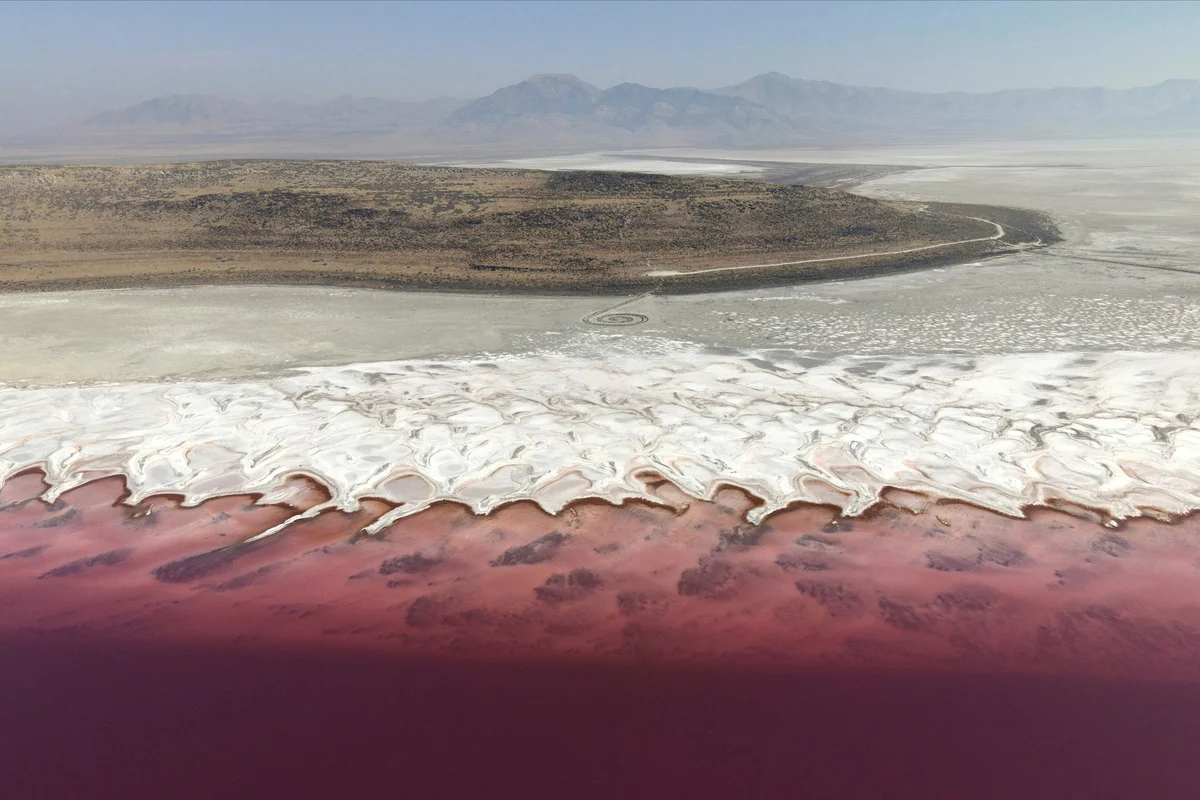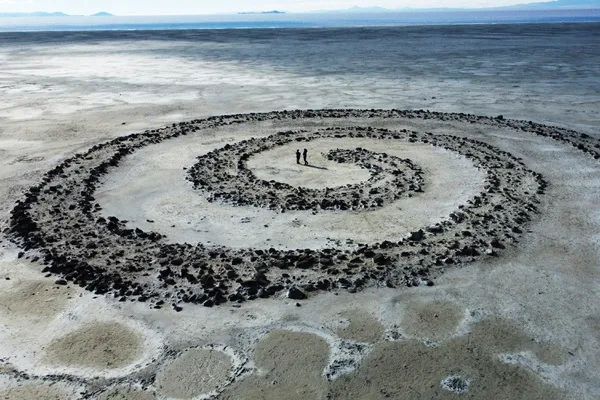Great Salt Lake - a salt lake in northwestern Utah, USA, containing industrial concentrations of salts in brines. Located among the western spurs of the Rocky Mountains, near Salt Lake City. The absolute mark of the water surface level is +1280 meters. Remaining basin of ancient Lake Bonneville. The lake is endorheic, the most significant tributaries (the rivers Bear, Weber, Jordan) flow from the Wasatch Range adjacent to the east. The area of the lake varies from 2500 to 6000 km 2depending on the amount of precipitation and, accordingly, the height of the lake level. The average depth is 4.5-7.5 meters, the greatest is 13-15 meters. The climate of the region is arid. The exploitation of the brines of the lake began in 1916 in order to obtain salts of Na, Mg, Br, B, Li. Since 1968, the industrial production of sulfates of K and Na, chlorides of Mg, Na, Li, Br has been mastered.
 |
| Great Salt Lake |
The Great Salt Lake basin is elongated from the southeast to the northwest according to the general strike of the structural elements of the rocky mountains; it is a deep graben, limited by blocks of two parallel horsts and complicated by two submerged transverse horsts; filled with a thick layer of Quaternary deposits. The brines of the lake are of the magnesium chloride type with a relatively high content of sulfates. Since 1959, the lake has been divided by a railway embankment into two parts, the water exchange between which is limited. Surface runoff occurs to the south from the Bear, Jordan and Weber rivers, so the north end plays the role of an evaporation basin. Mineralizationbrine in it reaches 334-345 g / l. The southern part is a feeding basin; up to a depth of 6-7 meters, brines have a mineralization of 130-150 g/l, below - 240-280 g/l. The chemical composition has been constant since 1936. The amount of salts entering the lake is about 2 million tons. Underground runoff is several times less in volume, but 60 times more salts come with it. The total salt reserves in the brine of the lake are about 6 billion tons, incl. (million tons): 200 K 2 SO 4, 450 Na 2 SO 4 530 MgCl 2, 3800 NaCl. Stocks increase due to the introduction of salts by waters of surface and underground runoff.
 |
| Great Salt Lake |
The extraction of brines is carried out by pumping them from the northern part of the lake into the evaporation pools, in which they move by gravity. Due to natural evaporation and an increase in the concentration of the brine, halite is first settling, and at the final stage - a mixture of potassium and magnesium salts (kainite and carnallite) - raw materials for obtaining K 2 SO 4 and Na 2 SO 4, MgCl 2, LiCl, BrCl. Extraction of brines and their further processing are carried out by "Great Salt Lake Minerals and Chemical Corp." ("GSL"). Lithium and bromine production facilitybelongs to Lithium Corp. of America. The productivity of the enterprises of the company "GSL" (1980), the processing plant of which is located on the eastern shore of the lake (near the city of Ogden), is 10 million tons of salts in the basin system. During the processing of salts, 240 thousand tons of K 2 SO 4 (51-53% K 2 O), 150 thousand tons of Na 2 S0 4, 600 thousand tons of MgCl 2 are produced. There are capacities for the production of 5 million tons of NaCl, but due to lack of demand, only 1-2% of this amount is produced. The production facilities provide about 50% of the K 2 SO 4 produced in the USA. In 1979, tests were carried out on the flotation of puppy.
